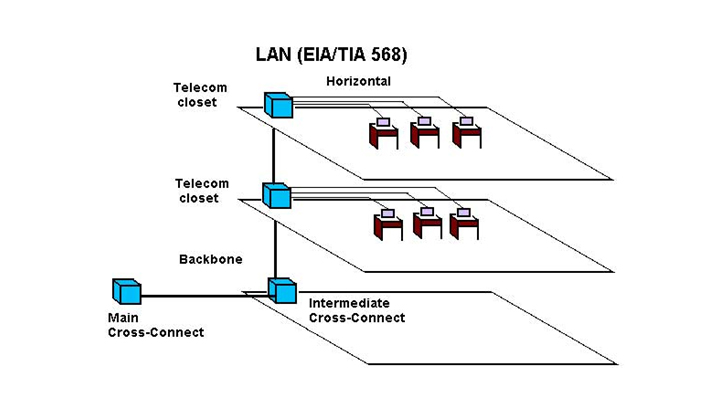
Networks that allowed computers to communicate with other computers and peripherals have been around for a long time. They evolved in two directions - wide area networks using phone lines and then the Internet, and local area networks (LANs) where most connected devices were in a building or campus. Networking PCs began seriously in the mid 1980s with many competing networks. Mostly using higher bandwidth coax cable or shielded twisted pair. Over time, Ethernet, developed by Xerox Palo Alto Research Labs, became the most popular. AT&T recognized the need for computer networks and created StarLAN using telephone wire. Not long afterwards, two people left Xerox PARC and started Synoptics, originally to do LANs over fiber but they discovered balanced transmission and created LattisNet which was close to what became 10BASE-T.
Local area networks (LANs) used to connect computers in a premises (indoor building) environment have been mostly based on standardized structured cabling. Structured cabling standards were developed around 1990 based on a 1982 AT&T survey of a small number of users of phone private switches (PBXs or private branch exchanges) that showed that most users were less than 300 feet (about 100m) from the switch. Using this information, a structured cabling architecture based on backbone cabling to local telecom rooms containing LAN hubs or switches that served users over copper cables was adopted. Early additions to the standard allowed for longer backbone distances using optical fiber.
Here is a diagram of early structured cabling, appropriately using a graphic from the era.

Over time, Ethernet network speeds grew from 10 to 100MB/s and then 1Gb/s. Fiber was quickly recognized as a simpler way to upgrade to higher speeds and provide longer backbone connections. Both multimode and singlemode fiber were added to the cabling standards for backbones with longer lengths and multimode was added to the horizontal link but still with the same 100m length limit.
The additional link length capability of fiber was later recognized by allowing a "centralized fiber" architecture in the standards. Here fiber connects the desktop directly without the electronics in the telecom closet (renamed telecom room in later versions of the standard.) Since fiber needs no intermediate electronics, the cost of equipment drops and the need for power, AC and grounds - or even the space allocated for the equipment (the telecom room) - means the cost of equipping telecom rooms goes away, easily offsetting the higher cost of the fiber electronics needed to interface to the connected device. The cost of the fiber cabling, meanwhile, had dropped and copper increased, so the cabling cost itself was often less for fiber than copper.
Meanwhile, wireless (WiFi) had become more capable of handling typical network traffic and users had begun migrating from desktop computers to laptops, tablets and smartphones using wireless, so architectures to support WiFi were being used in addition to desktop cabling.